When upgrading your home's electrical system to 200 amp service, choosing the correct wire size is crucial for safety, code compliance, and optimal performance. This comprehensive guide will help you understand wire sizing requirements, factors that affect your choice, and why professional installation matters.
Quick Answer: Standard Wire Sizes for 200 Amp Service
For most residential 200 amp electrical services, you'll need:
- Copper wire: 2/0 AWG (also written as 00 AWG)
- Aluminum wire: 4/0 AWG (also written as 0000 AWG)
These sizes apply to standard installations with service runs up to 100 feet from the meter to the main electrical panel.
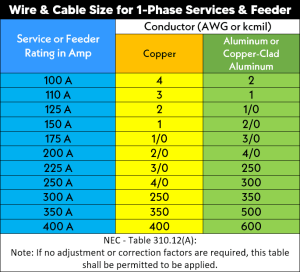
what size wire for 200 amp service
Understanding Wire Gauge and Ampacity
Wire gauge, measured in AWG (American Wire Gauge), determines how much electrical current a wire can safely carry. The larger the number, the smaller the wire diameter. However, once you reach sizes like 1/0, 2/0, 3/0, and 4/0, the pattern reverses – larger numbers mean thicker wires.
The ampacity of a wire refers to its maximum current-carrying capacity under specific conditions. For 200 amp service, your wire must safely handle this electrical load without overheating.
Factors That Affect Wire Size Selection
Distance From Meter to Panel
Wire size requirements increase with distance due to voltage drop:
- Up to 50 feet: Standard sizes typically sufficient
- 50-100 feet: May require upsizing for voltage drop considerations
- Over 100 feet: Larger wire sizes needed to maintain proper voltage
Installation Method
How the wire is installed affects its ampacity:
- Underground conduit: Different derating factors apply
- Overhead installation: Standard ampacity ratings typically used
- Bundled with other wires: May require larger sizes due to heat buildup
Local Climate and Conditions
Temperature affects wire performance:
- Hot climates: May require derating for higher ambient temperatures
- Cold climates: Generally less impact on ampacity
- Underground installations: Soil temperature considerations
Copper vs. Aluminum Wire for 200 Amp Service
Copper Wire Advantages
- Higher conductivity per size
- More durable and corrosion-resistant
- Easier to work with for electricians
- Longer lifespan
Aluminum Wire Considerations
- More cost-effective for large installations
- Larger physical size required
- Requires special connection techniques
- Expansion/contraction considerations
Code Requirements and Safety Standards
The National Electrical Code (NEC) sets minimum standards for electrical installations, but local codes may have additional requirements. Key considerations include:
- Grounding requirements: Proper grounding conductor sizing
- Service entrance requirements: Meter base and panel connections
- Overcurrent protection: Proper breaker or fuse sizing
- Installation methods: Conduit and burial depth requirements
Professional Installation Requirements
Installing 200 amp service involves working with high-voltage electricity and requires:
- Licensed electrician: Most jurisdictions require professional installation
- Electrical permits: Proper permits and inspections needed
- Utility coordination: Meter base and service connection requirements
- Code compliance: Ensuring all work meets current electrical codes
Cost Considerations
Wire costs vary significantly between copper and aluminum:
- Copper wire: Higher upfront cost but better long-term value
- Aluminum wire: Lower material cost but may require special hardware
- Installation costs: Professional installation typically ranges from $1,500-$4,000
- Permit fees: Usually $50-$200 depending on location
Common Installation Scenarios
New Construction
- Service wire sizing determined during electrical design phase
- Coordinated with utility company for service connection
- Integrated with overall electrical system planning
Electrical Panel Upgrade
- Existing service wire may need replacement
- Distance and accessibility factors important
- May require utility service upgrade coordination
Adding Subpanel or Workshop
- May require larger service entrance wire
- Load calculations determine actual requirements
- Distance to new panel affects wire sizing
Warning Signs You Need Professional Help
Contact a licensed electrician immediately if you notice:
- Frequent circuit breaker trips
- Burning smells from electrical panels
- Flickering lights throughout the house
- Warm electrical panels or outlets
- Insufficient power for appliances
Planning Your 200 Amp Service Installation
Before starting your project:
- Contact utility company: Determine service availability and requirements
- Obtain permits: Check local permit requirements
- Hire licensed electrician: Get multiple quotes from qualified professionals
- Plan load requirements: Calculate your actual electrical needs
- Consider future expansion: Plan for potential electrical additions
Maintenance and Safety Tips
After installation, maintain your 200 amp service by:
- Annual inspections: Have system checked by qualified electrician
- Keep panels clear: Ensure 3-foot clearance around electrical panels
- Monitor usage: Watch for signs of overloading
- Update as needed: Modify system for new appliances or additions
Conclusion
Selecting the proper wire size for 200 amp service is essential for electrical safety and code compliance. While 2/0 copper or 4/0 aluminum wire works for most standard installations, factors like distance, installation method, and local codes can affect requirements.
Always work with a licensed electrician for 200 amp service installations. They'll ensure proper wire sizing, code compliance, and safe installation practices that protect your home and family.
The investment in proper wire sizing and professional installation pays dividends in safety, reliability, and long-term electrical system performance. Don't compromise on quality when it comes to your home's electrical infrastructure.
Frequently Asked Questions
Q: Can I install 200 amp service wire myself? A: Most jurisdictions require licensed electrician installation for safety and code compliance reasons.
Q: How long does 200 amp service wire last? A: Properly installed copper wire can last 40+ years, while aluminum may require more frequent inspection and maintenance.
Q: Do I always need 200 amp service? A: Not necessarily. Calculate your actual electrical load requirements to determine if 200 amp service is needed for your home.
Q: What's the difference between service wire and branch circuit wire? A: Service wire carries power from the utility to your main panel, while branch circuits distribute power to individual outlets and appliances throughout your home.

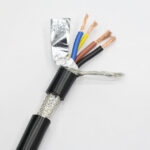
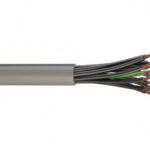
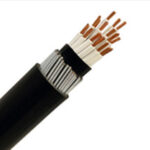
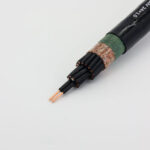
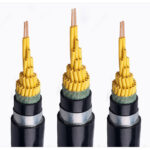
1 comment
Prediksi togel 09/07/2025
Wow discussion here, I totally agree the points you made. I’ve been searching for accurate prediksi togel numbers recently, and this community gives value. It’s crucial for players to keep learning. Thanks again for providing useful info like this.